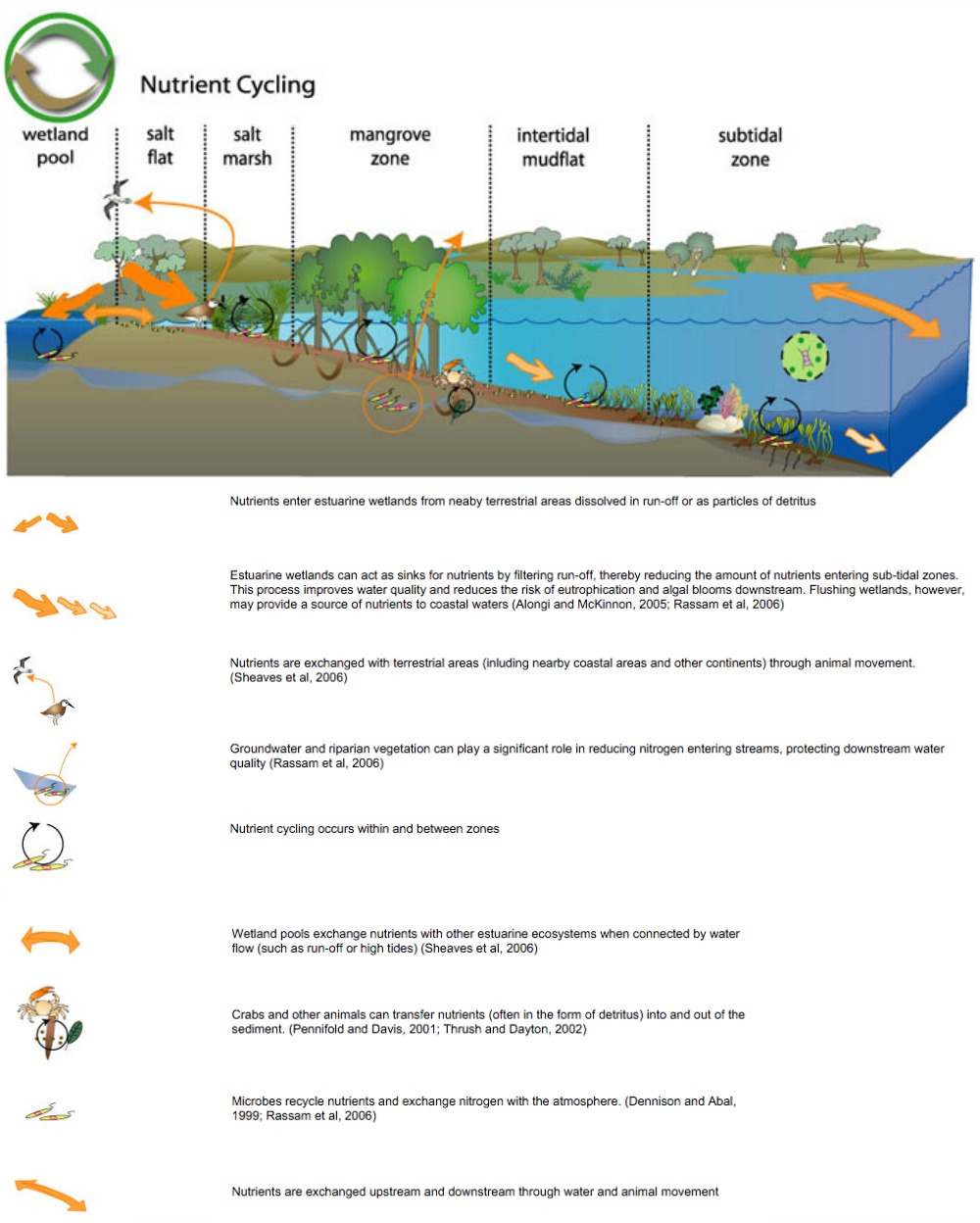Nutrient cycling in an estuarine ecosystem is the referral of organic and inorganic matter into an estuary and their transference into the production of living matter. These nutrients must maintain a balanced concentration in order to create a sustainable estuary. A conceptual model showing the nutrient cycle is shown below.

Primary and secondary consumers, particularly benthic organisms play a large role in the regulation of nutrient concentrations and consequently the productivity in estuarine systems (Nixon 1981). Sediments, which are permanently or principally inhabited by macrofauna, can be a source or a sink for nutrients (Nixon 1981). A sink in an estuary occurs when substances or forms of energy are absorbed and therefore removed from the water cycle. Several studies have shown the life activities of macrofauna including eating, burrowing, and excretion of wastes can influence the interchange of matter between the sediment and the above water column (Aller 1979, 1982; Kristensen et al., 1985, 1991; Hansen and Kristensen, 1997; Riefel et al. 1997; referenced in Pennifold and Davis 2001). One study found that benthic macrofauna do indeed contribute largely to the nutrient cycling in their study of the Swan-Canning Estuary (Pennifold and Davis 2001).
Climate change can impact the ability of the estuary to carry out nutrient cycling processes. A combination of several or all factors including increased temperature, reduced inflows, increased inflow pulses, and nutrient fluxes can create anoxic conditions, which occur when oxygen is depleted from the estuarine system. Anoxic events may alter the nutrient cycle by interrupting macrobenthic activities that can influence the nutrient cycle and transformations. (Pennifold and Davis 2001)
Anthropogenic influences can greatly affect the nutrient cycling processes of estuarine organisms through the increased introduction of waste discharges. The effects on organisms occur not only at the community level, but responses to anthropogenic wastes can be measured at the population, organismic, cellular and subcellular levels of organization (Kennish 1991). Rapid assimilation of heavy metals from water, food, and/or sediments has been shown for phytoplankton, zooplankton, and macroalgae (Kennish 1991). Macrobenthic invertebrates and mollusks eliminate heavy metals at a slow rate and are a source of bioaccumulation (Kennish 1991). Bioaccumulation is the accumulation of wastes and other substances via the organismal tissue. Disruption of the nutrient cycle can cause a decline in estuarine health and productivity. Biomagnification is the accumulation of substances via trophic links.